Model 27, 28
1905 model year.
60 hp 6-cylinder
The development and production of this first-generation 6-cylinder Thomas is not completely clear.
In April of 1904, there was a report of design work on the 6-cylinder engine,
based on doubling the 3-cylinder engine.
In September, the company announced the availability of 6-clinder cars for the 1905 season.
By the end of October, Walter M. Jermyn of Scranton had ordered a 6-cylonder racing machine
from NYC dealer Harry Houpt.
Some time before Nov. 1, Thomas put out an advance catalog that listed a 6-cylinder Model 28,
with a 116" wheelbase.
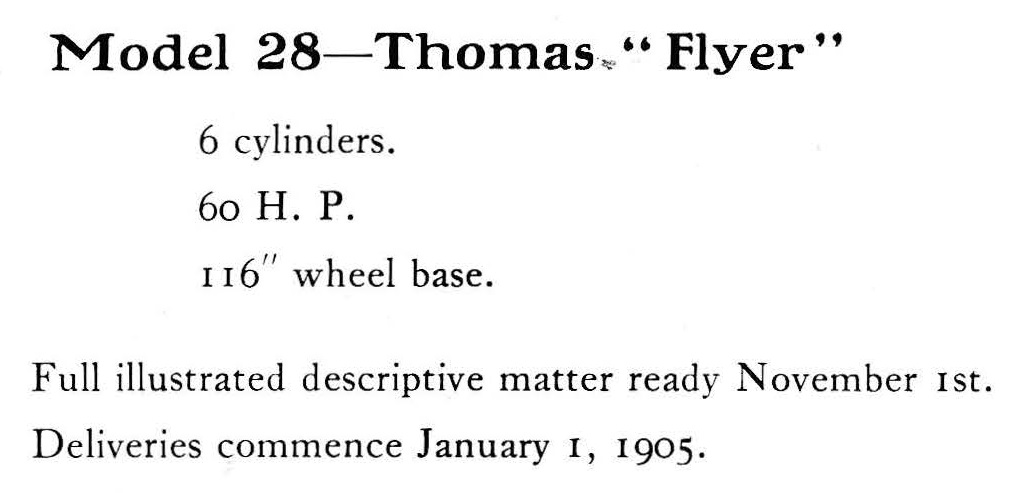
1905 Advance Catalog
On Nov. 9, Buffalo papers reported that the first 6-cylinder car was being built,
on the order of C. J. S. Miller.
On Nov. 12, Buffalo papers reported that the first 6-cylinder car was finished,
and that C. J. S. Miller had ordered a similar car.
On Nov. 13, it was reported that Charles S. Henshaw of Boston had received word
that hos new 6-cylinder racer was finished.
On Dec. 5, Buffalo papers reported that the first 6-cylnder Model 27 had its road test,
with designer A. B. Shultz at the wheel, exceeding 60mph even on snow-covered roads.
This photo was probably taken at the time of that road test,
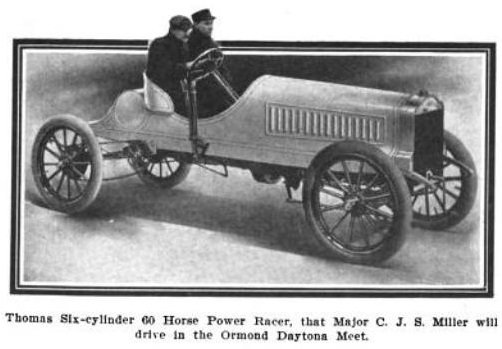
Automobile Review, Jan. 7, 1905
The same photo appeared a few days later in a Boston paper, confirming that Shultz was driving.
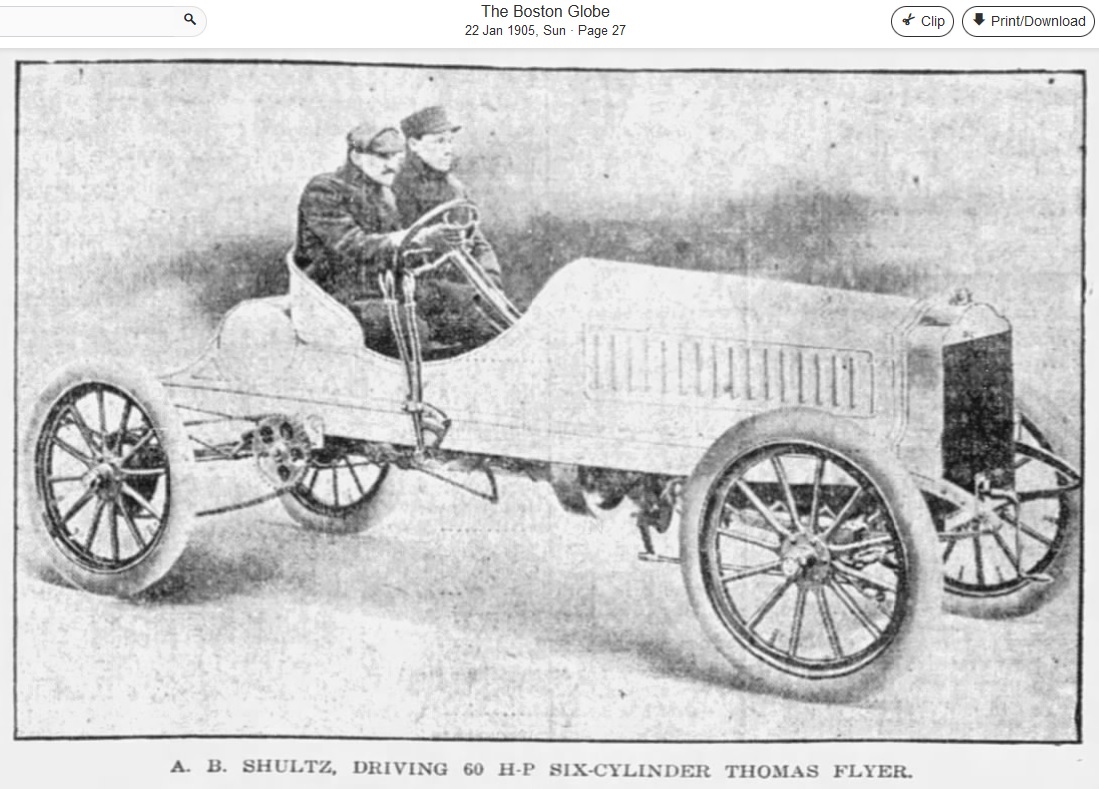
Boston Globe, Jan. 22, 1905
And the photo was the basis for the Model 27 image in the 1905 catalog.
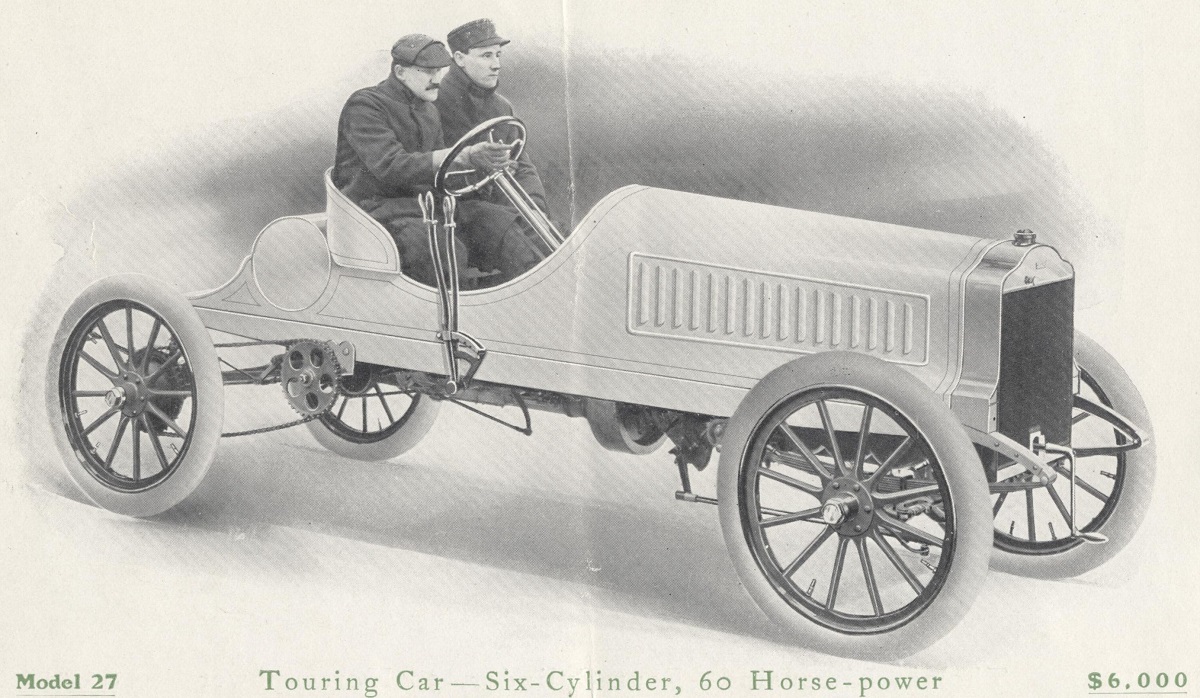
1905 catalog
Period reporting goes on to describe Miller taking his car to Ormond.
No photos exist of this car at Ormond, and no other images of it are known.
However, there are photos of a different 6-cylinder car at Ormond in 1905.
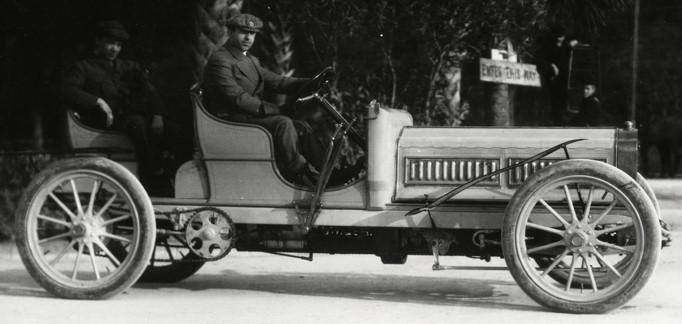
Detroit Public Library
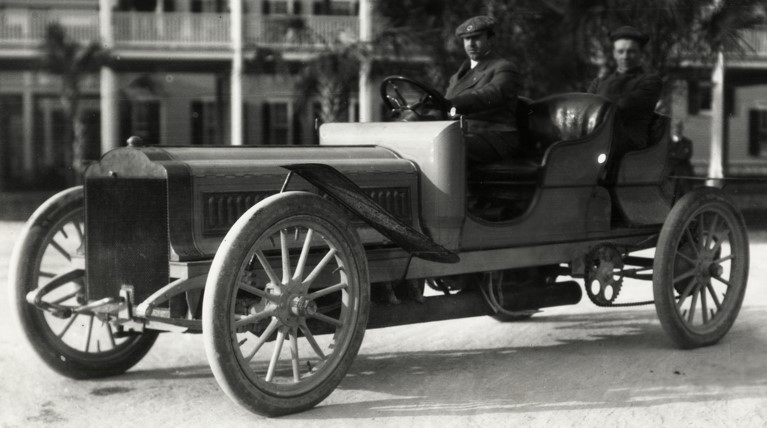
Detroit Public Library
This car has a longer wheelbase, a lower running gear with countershaft in line with rear axle,
an elongated version of the straight-sided passenger car hood (with two 3-cylinder car louvers).
It was also referred to as Model 27, and had a wheelbase 8" longer than the racing car at the top.
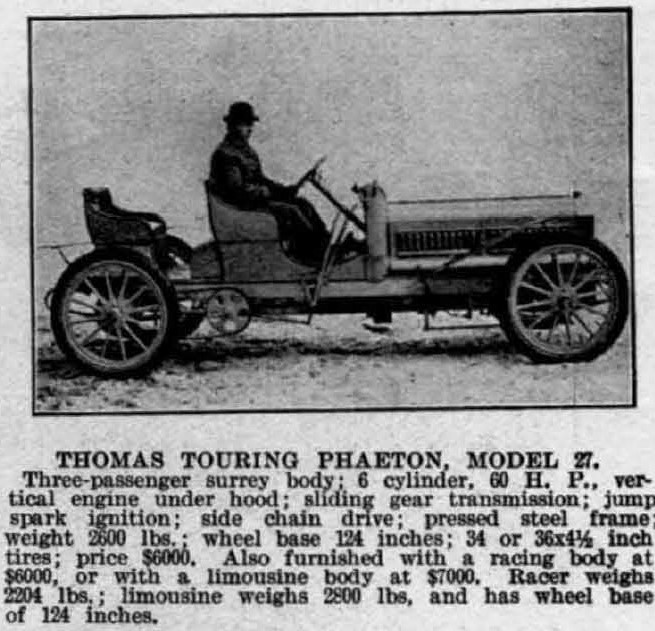
Cycla and Automobile Trade Journal, Mar. 1, 1905






